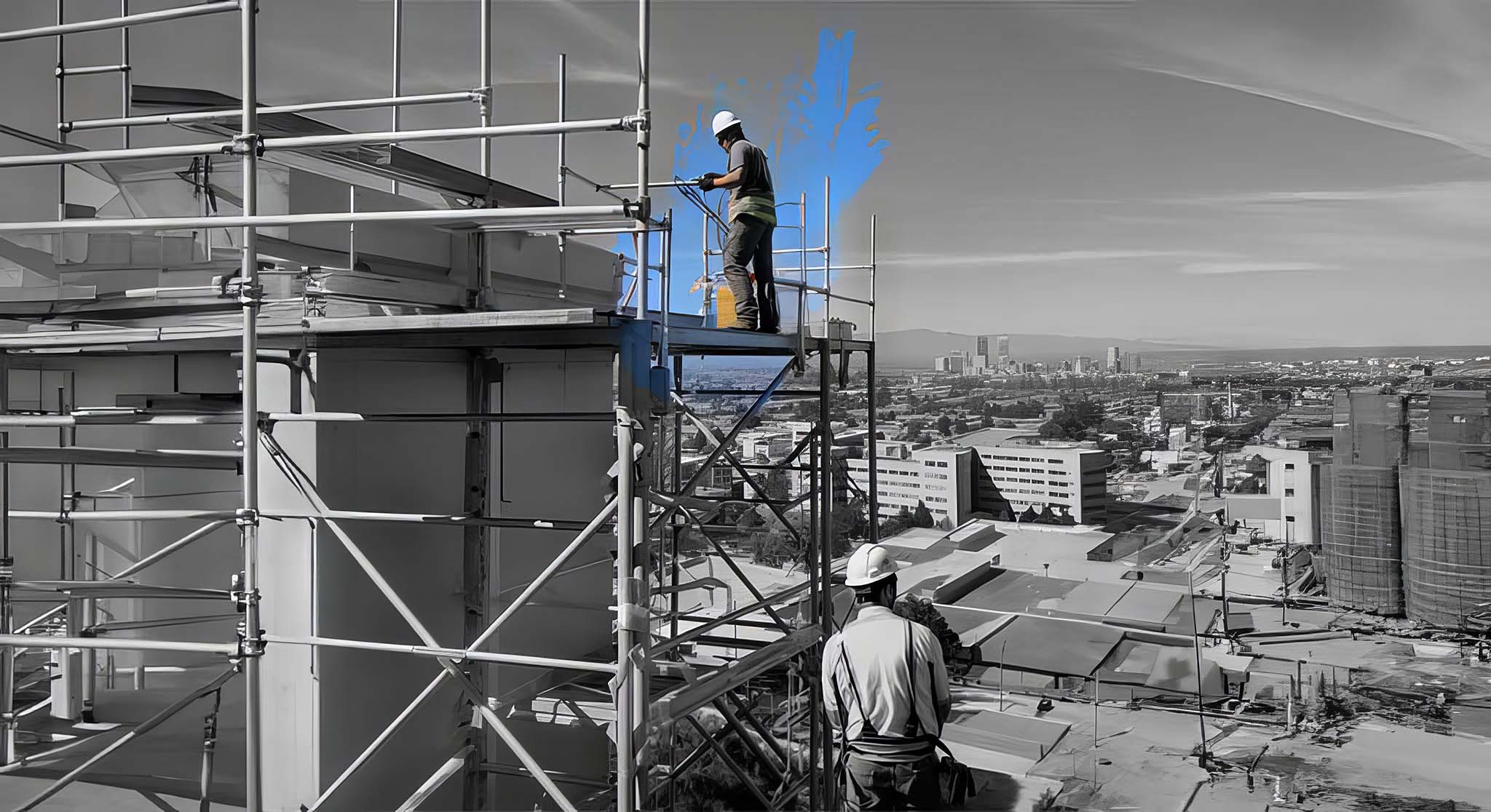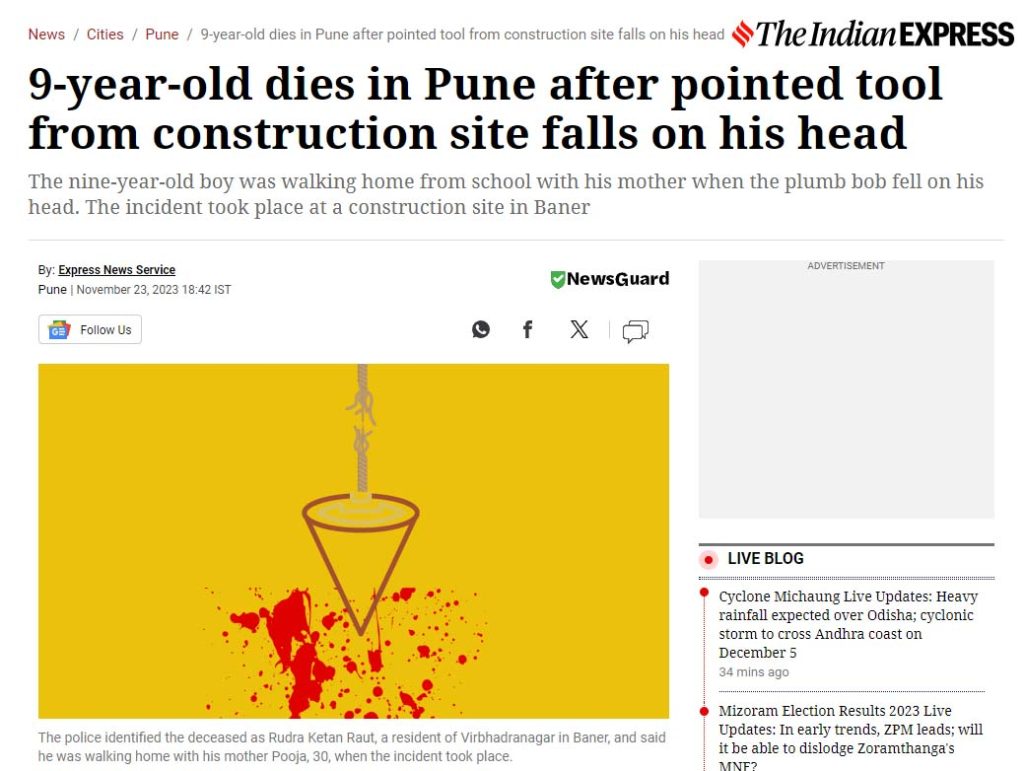GEM Engserv Pvt. Ltd is an ISO 9001:2015 certified organization, certified by TUV India in accreditation with National Accreditation Board for Certification Bodies (NABCB).
GEM Engserv Pvt. Ltd is an ISO 9001:2015 certified organization, certified by TUV India in accreditation with National Accreditation Board for Certification Bodies (NABCB).


Source: https://indianexpress.com/article/cities/pune/9-year-old-dies-pune-pointed-tool-construction-site-falls-head-9039746/
(Incidents such as this can occur at any moment and a strong OHSMS should be able to anticipate, prevent or reduce the impact from such hazards / risks.)
There is a very well defined process of risk management established for any project. This involves a brainstorming session first up where key stakeholders of a project sit together and call out various possible events which may prove to be an obstacle for the project from the perspective of time and cost. Thereon, this risk management team quantifies each risk by assigning probability and severity to them, identifies potential consequences of the events and control measures to manage the risk.
An implication of this to the Occupational Health and Management System is in the form of development and review of HIRAC or Hazard Identification, Risk Assessment and Controls (or Control Measures). HIRAC is an important pillar of the Occupational Health and Safety Management System, yet it is a concept that is not very well understood by engineers in the field. To most who do not come from a background of safety management, HIRAC seems like documentation. However, a carefully considered and frequently reviewed HIRAC ensures that unforeseen risks to the construction project are avoided, reduced or handled effectively when / if they eventually do manifest.
Construction is the second most hazardous industry, next only to mining. Construction sites are inherently dangerous for a number of reasons. The fact that they are spread out over a large area and the work front often cannot be restricted to a specific location (unlike manufacturing / processing industries) is only a part of the complication. Even if the overall area of work is demarcated, it surpasses the range of movement of an individual or a group by a large margin. Moreover, the landscape changes continuously and different hazards take centre stage at different phases of construction. Therein lies the challenge with controls and the need for an effective OHS Management System.
Consider the various activities stage-wise across a construction project and the implications that they may have for managing safety. Here we have analysed various activities, the hazards and inherent risks and also assigned a score for the risk.
(We’re linking a sample HIRAC for your perusal. However, this is only an example, and a HIRAC specific to your project must be worked out after careful consideration. Reach out to us at business@gemengserv.com and we can support you in the process of developing a HIRAC.)
Considering the exposure of workers, engineers and other general staff to these hazards, it is crucial to carefully prepare a Safety Plan.
Risk management, like insurance, does not lead to very easily traceable benefits, except when things go wrong. Often when this happens, the project teams have no idea how to handle the fallout and the otherwise controllable incident ends up having a large impact on the project in terms of time and cost.
Construction sites, especially in a country like India are heavily staffed and work is labour intensive and dependent of humans. The impact of an accident is at the very least a distraction to the workers on site. A worse case may be complete stoppage of work, either due to actual physical danger or because the workers are too shocked and afraid to carry on.
Witnessing an accident and having a weak system in place takes a huge toll on worker morale. It becomes difficult to regain confidence of the labour gangs and assure them that a similar incident will not occur. In odd cases, workers may even decide to not continue working due to the unsafe conditions.
Even if the project team manages to drive the workforce back into action, they outcomes are likely to be suboptimal. At the very least, workers would be more tentative, less confident about their movements and not be able to deliver at their full capacity.
In this day and age of high visibility, incidents can no longer be suppressed. This is a good thing because it places accountability squarely on the project stakeholders. The beneficiaries of the project (the principal employers) are the ones with highest accountability for any incident and must take the burden of the risk if they derive maximum share of the reward from a project. In light of this, any incident invites instant bad press and can lead to engineers and workers alike abandoning the project. It may become difficult to recruit new people on a project tainted with blood (apologies for the graphic inference).
In a number of recently reported cases of fatal accidents, the entire project team, supervisors and representatives of the principal employers have been booked for negligence. Nothing halts a project like executive action at the hands of the law. Once again, like insurance, occupational health and safety appears to a financial burden right up to the point when a mishap occurs.
Given the nature of work that goes on at our construction projects, no system can prevent accidents. That is not the idea. The intention of the OHSMS is to minimize the chance of an accident and ensure preparedness at the time of an incident.
The scale of construction is growing at an unprecedented pace and Safety Management is no longer an area which can be neglected. It is now necessary to not just implement a strong Occupational Health and Safety Management System but also be able to document it. If this is implemented, we will be well equipped to handle an unforeseen situation when it eventually occurs.
GEM Engserv Private Ltd. , A-103, The Great Eastern Chamber, Plot No-28, Sector-11, CBD Belapur, Navi Mumbai 400614